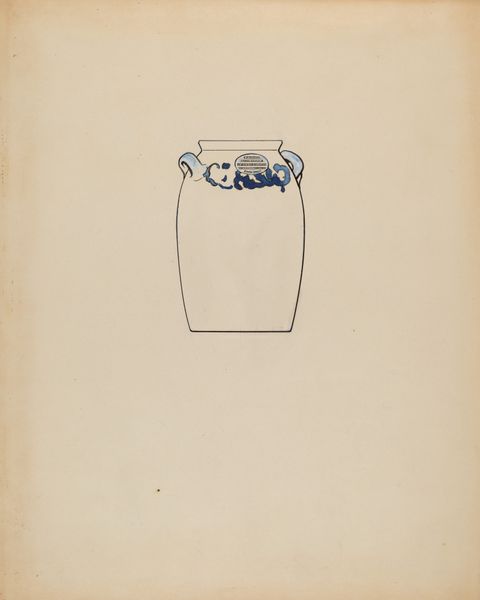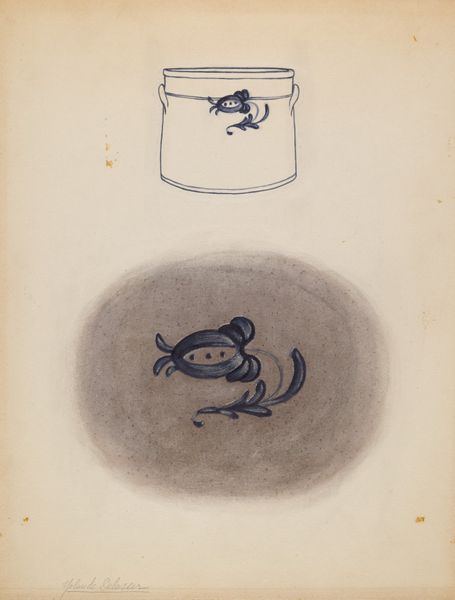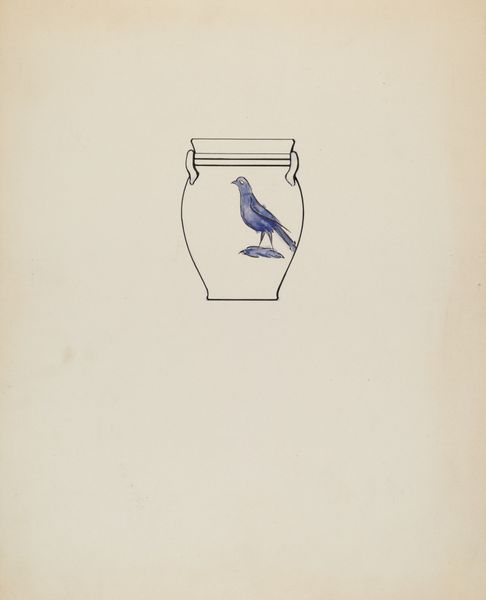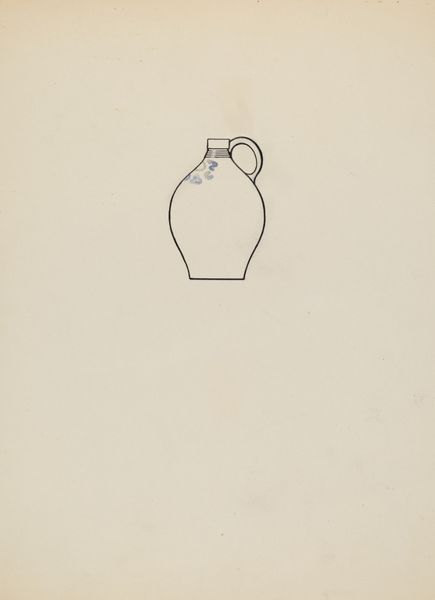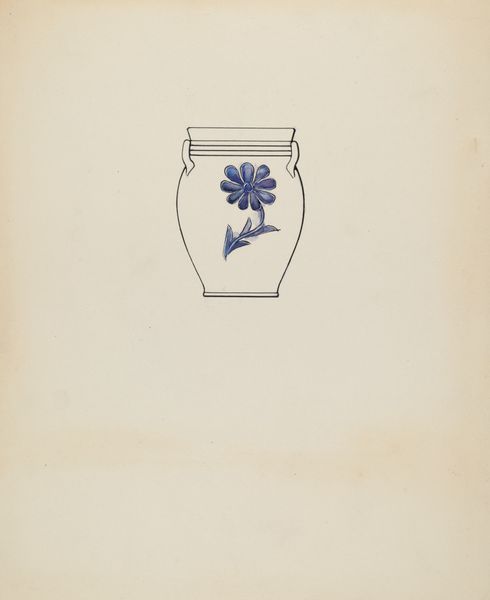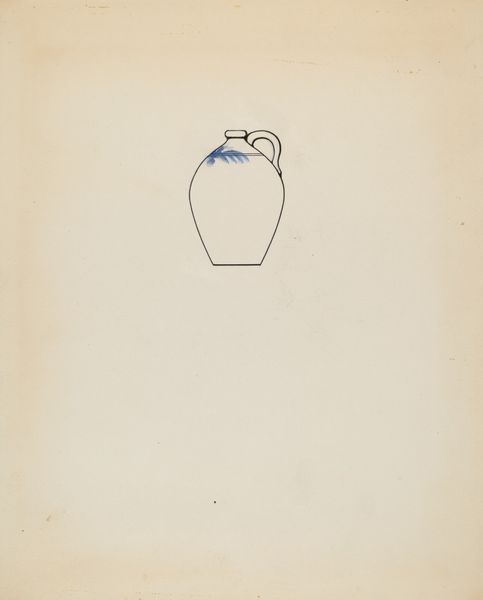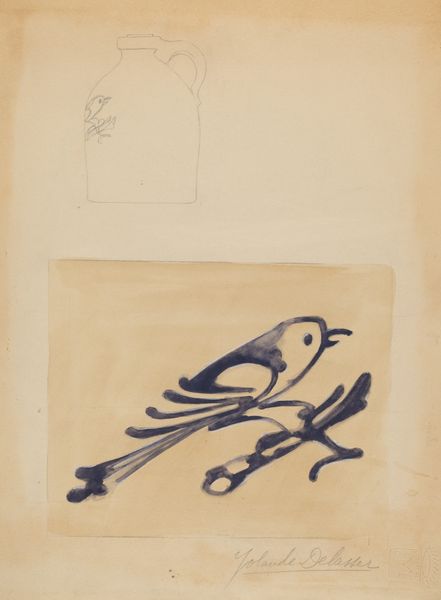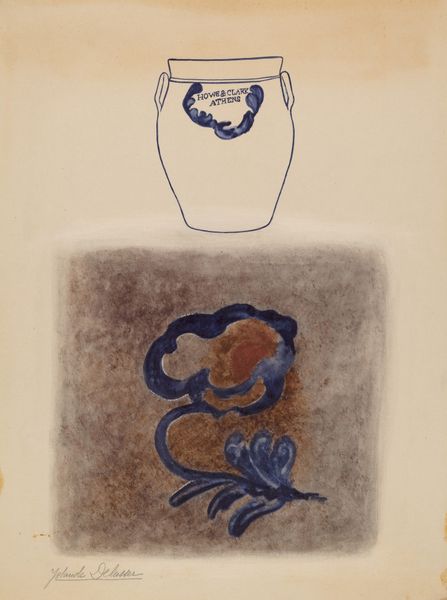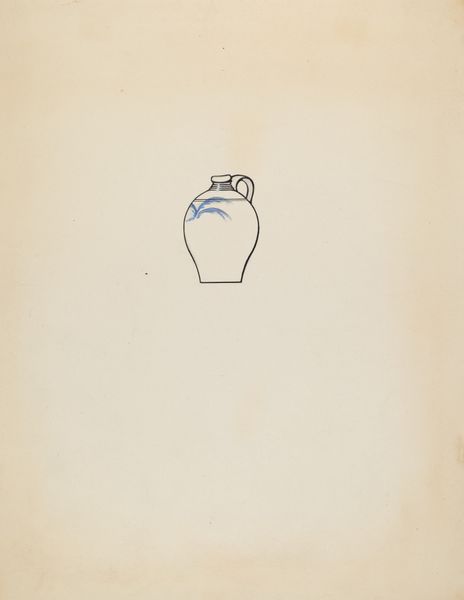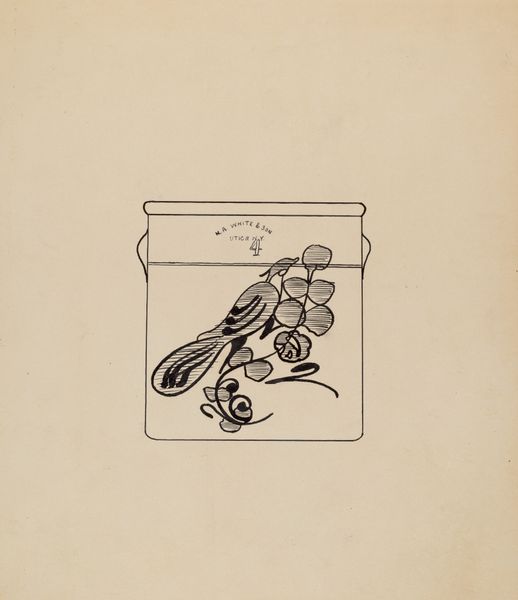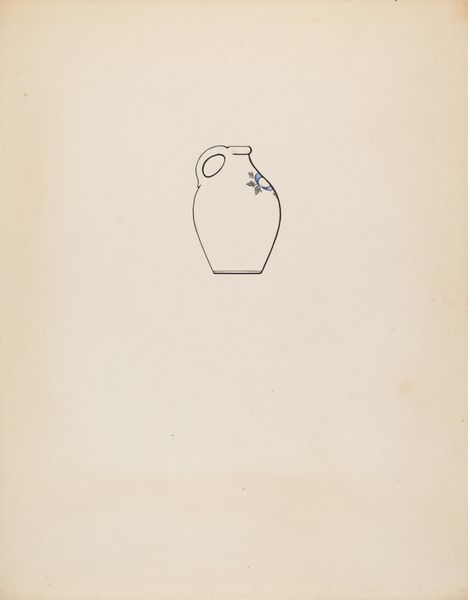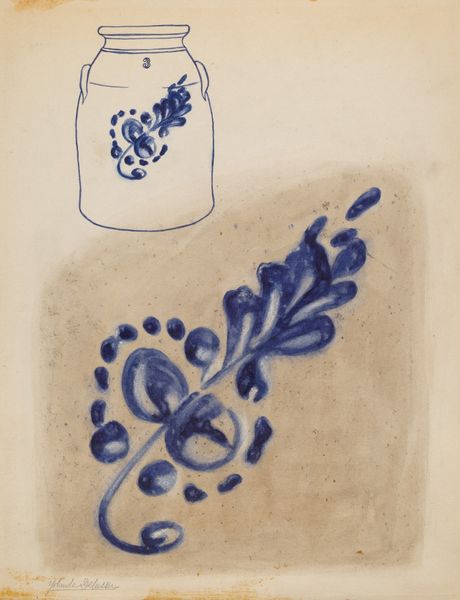
drawing, ink
#
drawing
#
blue ink drawing
#
ink
#
decorative-art
Dimensions: overall: 28 x 22.7 cm (11 x 8 15/16 in.) Original IAD Object: 11 1/4" High 11 1/2" Dia(top)
Copyright: National Gallery of Art: CC0 1.0
Editor: We're looking at "Crock," a drawing in ink by John Tarantino from around 1940. The subject is a ceramic crock, and the artist used decorative elements on it, like the blue jay. There is something so charming in its simplicity. What formal elements stand out to you in this piece? Curator: Immediately, I’m struck by the economy of line. Note how Tarantino establishes form and depth using primarily contour lines and strategic areas of filled-in ink wash. There's a considered balance between positive and negative space. The subject is clearly represented but its stylized application, notably in the representation of the blue jay, demonstrates an exploration of pure form. The question becomes, what do these distilled forms convey beyond mere representation? Editor: So it’s about what he leaves *out* as much as what he includes. I hadn't considered the empty space as actively contributing. Curator: Precisely. The negative space allows the eye to complete the forms and appreciate the isolated composition. Furthermore, the blue ink isn't merely descriptive; it contributes to the artwork's overall structure, modulating tonality to generate depth within the limited chromatic scale. What is the relationship, therefore, between these visual choices and their possible implications? Editor: I suppose it asks us to consider the *essence* of a crock and the decoration rather than its real world application. The very simplification makes it art. I was focusing so much on *what* it was; I forgot to look at *how* it was made. Curator: And through understanding 'how', the essence is revealed, leading us closer to a greater understanding of art itself.
Comments
No comments
Be the first to comment and join the conversation on the ultimate creative platform.
